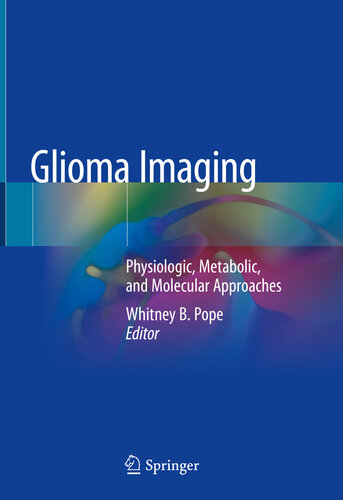Glioma Imaging: Physiologic, Metabolic, and Molecular Approaches 2019
دانلود کتاب پزشکی تصویربرداری گلیوما: رویکردهای فیزیولوژیکی، متابولیک و مولکولی
| نویسنده |
Whitney B. Pope |
|---|
| تعداد صفحهها |
286 |
|---|---|
| نوع فایل |
epub |
| حجم |
55 Mb |
| سال انتشار |
2019 |
89,000 تومان
این کتاب تصویربرداری فیزیولوژیکی، متابولیک و مولکولی گلیوما را پوشش میدهد. گلیوما شایع ترین تومور اولیه مغزی است. تصویربرداری به دلیل توانایی آن در شناسایی محل آناتومیکی و وسعت بیماری برای مدیریت گلیوم بسیار مهم است. در حالی که MRI معمولی برای هدایت درمانهای فعلی استفاده میشود، مطالعات متعدد نشان میدهد که ویژگیهای مولکولی گلیومها را میتوان با تصویربرداری غیرتهاجمی، از جمله MRI فیزیولوژیک و توموگرافی انتشار اسید آمینه (PET) شناسایی کرد. این تکنیکهای تصویربرداری پیشرفته به روشن شدن بیولوژی تومور اولیه کمک میکنند و اطلاعات مهمی را ارائه میدهند که میتواند در عمل بالینی معمول گنجانده شود.
متن شیوههای بالینی فعلی از جمله سناریوهای رایج را نشان میدهد که در آن تفسیر تصویربرداری بر مدیریت بیمار تأثیر میگذارد. شکافها در دانش و زمینههای بالقوه پیشرفت بر اساس کاربرد تکنیکهای تصویربرداری تجربی بیشتر مورد بحث قرار خواهند گرفت. در بررسی این کتاب، خوانندگان یاد خواهند گرفت:
<
- روشهای تصویربرداری استاندارد کنونی مورد استفاده در عمل بالینی برای بیماران تحت درمان گلیوما و پیامدهای آن برای روشهای درمانی نوظهور از جمله ایمونوتراپی
- مبنای نظری برای تکنیکهای تصویربرداری پیشرفته از جمله MRI انتشار و پرفیوژن، طیفسنجی رزونانس مغناطیسی، CEST و اسید آمینه PET
- ارتباط بین تصویربرداری و ویژگیهای گلیوم مولکولی/ژنتیکی موجود در بهروزرسانی طبقهبندی WHO Global 2016 و کاربرد بالقوه یادگیری ماشینی
- درباره پروتکل استاندارد تومور مغزی مورد تایید اخیراً مورد تایید FDA برای آزمایشات دارویی چند مرکزی
- شکاف های دانشی که مانع مدیریت بهینه بیمار می شود و آخرین فناوری تصویربرداری که می تواند این کاستی ها را برطرف کند
This book covers physiologic, metabolic and molecular imaging for gliomas. Gliomas are the most common primary brain tumors. Imaging is critical for glioma management because of its ability to noninvasively define the anatomic location and extent of disease. While conventional MRI is used to guide current treatments, multiple studies suggest molecular features of gliomas may be identified with noninvasive imaging, including physiologic MRI and amino acid positron emission tomography (PET). These advanced imaging techniques have the promise to help elucidate underlying tumor biology and provide important information that could be integrated into routine clinical practice.
The text outlines current clinical practice including common scenarios in which imaging interpretation impacts patient management. Gaps in knowledge and potential areas of advancement based on the application of more experimental imaging techniques will be discussed. In reviewing this book, readers will learn:
- current standard imaging methodologies used in clinical practice for patients undergoing treatment for glioma and the implications of emerging treatment modalities including immunotherapy
- the theoretical basis for advanced imaging techniques including diffusion and perfusion MRI, MR spectroscopy, CEST and amino acid PET
- the relationship between imaging and molecular/genomic glioma features incorporated in the WHO 2016 classification update and the potential application of machine learning
- about the recently adopted and FDA approved standard brain tumor protocol for multicenter drug trials
- of the gaps in knowledge that impede optimal patient management and the cutting edge imaging techniques that could address these deficits




